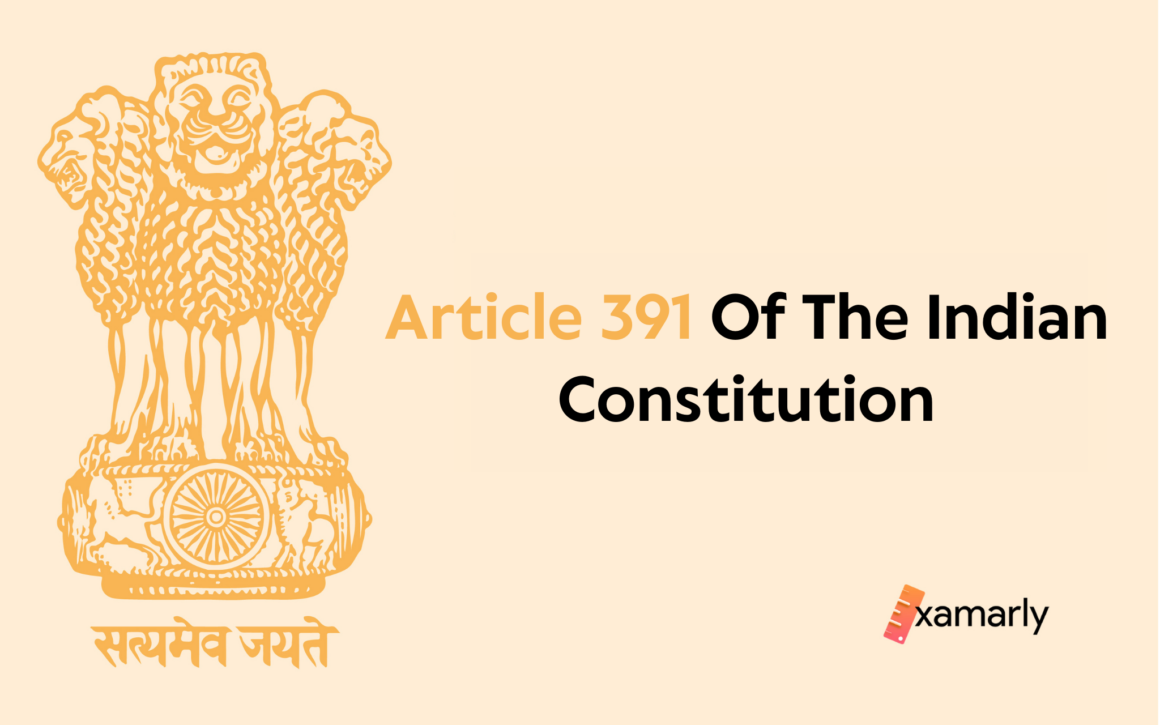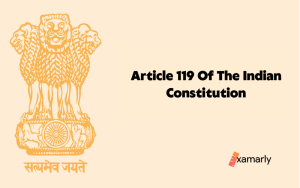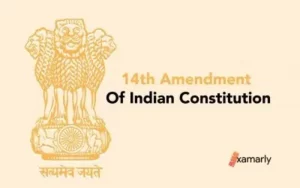Article 391 of the Indian Constitution relates to the powers of the President to amend the First and Fourth Schedules in certain contingencies.
Let us have a thorough understanding of Article 391 of the Indian Constitution and its’ repeal from the Constitution of India.
Article 391 Of The Indian Constitution
Under Article 391 of the Indian Constitution, the President of India has the power to amend the First and Fourth Schedules of the Constitution in certain contingencies.
The First Schedule of the Indian Constitution contains the territories of the states and union territories of India, while the Fourth Schedule contains provisions related to the allocation of seats in the Rajya Sabha (Council of States), which is one of the two houses of the Indian Parliament.
The contingencies under which the President can amend the First and Fourth Schedules are:
- When a new state is formed or an existing state is divided or reorganised, the President can amend the First Schedule to reflect the changes in the territorial boundaries of the states.
- When a new union territory is created or an existing union territory is reorganised, the President can amend the First Schedule to reflect the changes in the territorial boundaries of the union territories.
- When a new state or union territory is admitted to the Union, the President can amend the Fourth Schedule to provide for the allocation of seats in the Rajya Sabha for the new state or union territory.
- Any other contingencies as the President may deem fit.
These amendments to the First and Fourth Schedules are made by the President by issuing an order, and such an order is subject to the approval of the Parliament.
Article 391 Of The Indian Constitution – Omission
The President’s power to amend the First and Fourth Schedules of the Indian Constitution in certain contingencies under Article 391 of the Indian Constitution was omitted by the 42nd Amendment Act of 1976.
This amendment was passed during the Emergency period in India (1975-77) and aimed to centralise power and reduce the autonomy of the Indian states.
One of the changes made by the 42nd Amendment Act was to transfer the power of reorganisation of states and union territories from the President to the Parliament.
This was done to ensure that the process of reorganisation would be subject to democratic scrutiny and approval by the Parliament.
As a result of this change, the President’s power to amend the First and Fourth Schedules in certain contingencies under Article 391 of the Indian Constitution was no longer needed, and it was removed from the Constitution of India.
The 42nd Amendment also abolished the power of the President to issue an ordinance if the Parliament is not in session.
This amendment also made it mandatory for the President to act on the advice of the council of ministers and the Prime minister.
Summary
Article 391 of the Indian Constitution referred to the powers of the President to reorganise states & union territories.
It was omitted by the Constitution (Seventh Amendment) Act, 1956.
You Might Also Like To Read:
FAQs Related To Article 391 Of The Indian Constitution
What is the purpose of Article 391 of the Indian Constitution?
Article 391 of the Indian Constitution provides for the provisions regarding the merger of a princely state with the Indian Union.
It gives the President of India the power to extend the Indian Constitution to any princely state that accedes to the Union, and for the admission of such state to the Union, and for the alteration of the Constitution in its application to such state, and for all other matters connected with such accession.
How does Article 391 of the Indian Constitution relate to the First and Fourth Schedules?
Article 391 of the Indian Constitution gives the President the power to amend the First and Fourth Schedules of the Constitution in certain contingencies.
The First Schedule of the Constitution contains the territories of the states and union territories of India, while the Fourth Schedule contains provisions related to the allocation of seats in the Rajya Sabha (Council of States), which is one of the two houses of the Indian Parliament.
Why was the President’s power to amend the First and Fourth Schedules in certain contingencies under Article 391 of Indian Constitution omitted?
The President’s power to amend the First and Fourth Schedules of the Indian Constitution in certain contingencies under Article 391 was omitted by the 42nd Amendment Act of 1976.
This amendment was passed during the Emergency period in India (1975-77) and aimed to centralise power and reduce the autonomy of states.






